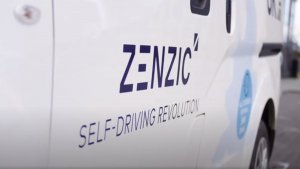ALKS – Utilising the Virtual and Physical Worlds of Vehicle Testing
Tom Leggett is the Lead Research Engineer for Automated Driving at Thatcham Research. This is the second blog in a series providing the behind the scenes insights into his work developing a world-first consumer rating for Automated Driving Systems. Here, Tom explains why virtual and physical test environments are fundamental to automated vehicle assessment.

Until now, independent vehicle testing has typically taken the form of physically assessing an “off-the-shelf” production vehicle in a limited number of well-defined scenarios.
For ‘active’ safety testing, this involves testing the vehicle’s ability to avoid a collision using technology like Autonomous Emergency Breaking (AEB) across a spread of realistic speeds, e.g.10 to 70 mph. If the test vehicle can avoid a collision or reduce the speed of an impact, the better the safety rating.
This allows for a very precise assessment of the chosen test scenarios, but with little to no allowance of complex variations. For example, testing is only valid in certain weather conditions and parameters. This ensures that regardless of where the testing took place, the results are consistent and comparable.
These traditional scenarios represent instances where a collision is imminent, which is only a moment in time when considering the whole driving journey. As automated vehicles fitted with Automated Lane Keeping Systems (ALKS) will be responsible for the driving task, they must not only be able to respond in emergency situations, but also be able to safely manage general driving, and the low-risk instances we encounter daily on the roads.
For example, this could include staying in lane on the motorway, keeping a safe distance to the vehicle in front, adjusting speed for a vehicle moving into the lane and so on. To robustly evaluate the behaviour of an automated system, these scenarios must also be assessed.
If we were to follow traditional testing methodology, each automated vehicle would have to be driven for tens of thousands of miles to verify its capabilities. This would not only be extremely time consuming, but also would not guarantee that a suitably wide variety of driving scenarios have occurred during testing.
This is where leveraging the power of virtual testing enables us to assess a greater breadth of scenarios, from the everyday, to the rare ‘edge cases’. In addition, parameters such as weather, road condition, illumination and other environmental factors can also be accounted for. Physical testing across the UK’s world leading CAM Testbed UK can then be used to spot check the virtual testing results, verifying the performance.
In that respect the project, that is funded by the Centre for Connected and Automated Vehicles (CCAV) and co-ordinated by Zenzic, will demonstrate how both virtual and physical testing can boost our ability to provide confidence in complex vehicle technology such as ALKS, whilst ensuring our independent testing rigour is not compromised, but greatly enhanced.
To find out more about the ALKS project, please click here


